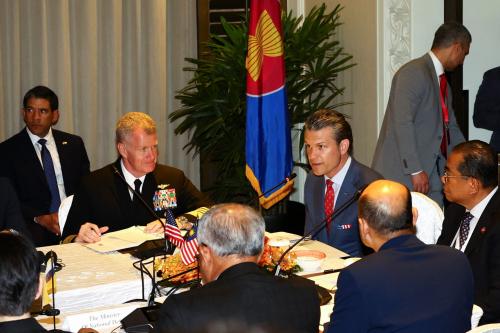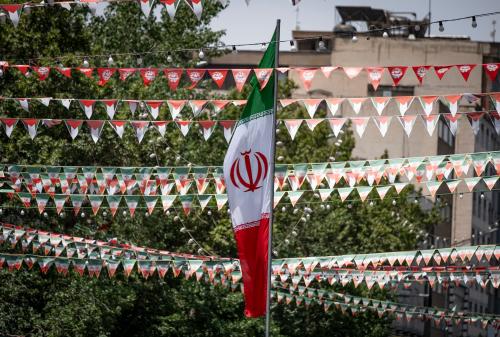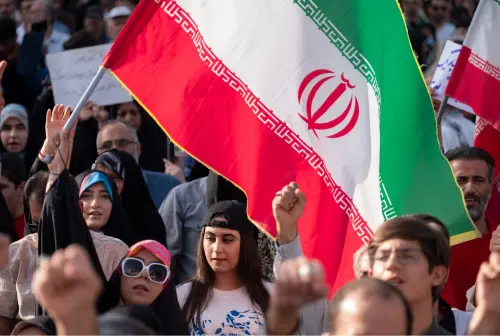From counterterrorism to preparing for great-power conflict, the U.S. Army is facing a range of challenges in adjusting its force and strategic outlook. With six modernization priorities and ongoing concerns about its operational readiness, the Army has had to make substantial decisions on downsizing or eliminating significant legacy platforms in order to deliver on the vision laid out in the National Defense Strategy.
On March 14, Brookings Senior Fellow Michael O’Hanlon spoke with Undersecretary of the United States Army Ryan McCarthy about the Army’s budget request, its operational outlook, and the role it will play in future defense strategy.
McCarthy opened by highlighting the Army’s budget plan. He said that “if you look at the totality of what we are proposing…this budget plan represents the most consequential shift in the way the U.S. Army is organized and equipped in more than 40 years.” Building on the National Defense Strategy, McCarthy said the new budget plan calls for “what is required to compete with, deter and, if necessary, defeat our most likely adversaries in the European and Pacific theaters.”
Because of the long-term strategic threat that is China, the Army must put a premium on integrated air missile defense systems, long-range artillery, and other ground capabilities. Meanwhile, Russia “is able to use its short-term interior alliance to project military might beyond its borders,” while “advanced Russian cyber and electronic warfare capabilities…play havoc with our space and network dependent systems.” Despite the efforts of both China and Russia to leverage new tactics in technology, the United States has significant advantages that allow it to mitigate these growing threats.
McCarthy said the Army needs to have the right institutional priorities in place. With major new additions to the modernization portfolio, it will be suited to the challenges he laid out. A few programs he highlighted are:
- 1.3 billion in FY 2020 for Long Range Precision Fires (LRPF) Missiles (which neutralize targets using missile-delivered indirect precision fires) to fund hypersonic weapons ahead of Russian and Chinese advances;
- More than $13.2 billion for next-generation combat vehicles, including robotic and optionally-manned combat vehicles built with artificial intelligence;
- $4.7 billion for Future Vertical Lift, a new generation of advanced helicopters, to replace the Army’s aging helicopter fleet;
- More than $12.5 billion for new command and control communications networks to leverage commercial technologies and space-based systems;
- $8.8 billion for modernizing air and missile defense to revitalize short-range air defenses and support procurement of an integrated fire protection capability, like Iron Dome (which intercepts and destroys short-range rockets and artillery shells); and
- $6.7 billion for an Integrated Visual Augmentation System “to give infantrymen superior battlefield awareness.”
To pay for these investments, McCarthy stressed the need to prioritize the Army’s requirements for both near-term contingencies and long-term threats while exerting fiscal discipline in divesting legacy systems. He recognized that defense budgets will likely stay flat or even decline, so he has emphasized finding funds through cost savings and careful analysis of over 500 programs. With a new approach to recruiting that emphasizes quality, the Army has slowed its projected growth end strength to 2,000 recruits year-over-year.
Following his remarks, O’Hanlon asked McCarthy how the Army has reduced the number of non-deployable soldiers. He replied that Former Defense Secretary Mattis was “unrelenting” in making sure every asset is ready to go. So the Army started by looking at the training calendar to ensure soldiers got back to deployable shape. O’Hanlon pointed out that the Army now has 26 of its brigade combat teams at a high-tier or top-tier of readiness—up from 19 the previous year. McCarthy explained that by FY 2022, the Army believes it will have two-thirds of its brigade combat teams at the highest level of readiness.
O’Hanlon then asked why he believes the Army can make do with fewer than 500,000 active-duty soldiers. He explained that the Army is changing its operating concept to incorporate new technological advances, which will support the current structure.
Finally, O’Hanlon asked if there is any area of technology which he sees as a big opportunity or vulnerability. McCarthy said he is most excited about hypersonics, where there has been a lot of energy and resources devoted across the Department of Defense. Regarding challenges, McCarthy highlighted communications, and the need to ensure the Army has a resilient network in place to minimize efforts by near-peer competitors to undermine it.
The Brookings Institution is committed to quality, independence, and impact.
We are supported by a diverse array of funders. In line with our values and policies, each Brookings publication represents the sole views of its author(s).






Commentary
How does the army prepare for a new era of geopolitics?
Experts discuss
March 22, 2019